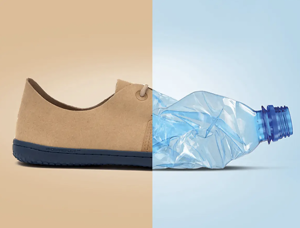The fast fashion industry is a huge problem in the United States. But what is it? Fast fashion is described as clothes that are trendy for the time but are designed to not last long and fall apart easily so that the consumer has to buy more (L. Payne 40). Sophia Han describes it, saying that “the very purpose of fast fashion is to pump out new designs and get rid of the old, it encourages consumers to abandon products after only a few wears, solely because it is ‘out of style’” (15). There are many problems with this, both environmentally and socially, making this a sustainability issue.
On the environmental side of fast fashion, pollutants are emitted every step of the way in the fashion manufacturing process. Nidhi et al. discuss a few of the environmental problems that fast fashion creates. They write that “the apparel business is acknowledged as one of the most polluting due to its high energy and water consumption, usage of chemicals, and worker abuse” (7). The textile manufacturing process generates chemical pollution, water pollution, and CO2 emissions and as the fast fashion industry becomes increasingly popular, these pollutants only grow, and environmental health worsens.
There are lots of benefits to thrifting. It helps the environment by not buying new clothes and reusing discarded ones and provides affordable clothing to those in need. I personally enjoy thrifting a lot. I now solely buy clothing from thrift stores, other secondhand opportunities, and sustainable sites. It can be difficult to find what you need sometimes, but for general clothing shopping I find it very useful. I also get a little boost of confidence whenever I purchase a thrift that I am helping the environment by diverting something that would be waste. I also do not throw away my clothing at the first sign of wear and tear. Mending clothing and following the tag recommendations of items is a good way to keep clothing intact and with you for the long haul.
Another way to sustainably purchase clothing is to shop locally. This more so tackles the social problems with fast fashion. Fast fashion industries like H&M, GAP, and more famously, Shein historically exploit their workers for the fashion industry. Han explores this exploitation, saying that over 540 workers for fast fashion companies such as H&M and GAP have reported being threatened and harassed in their workplace. Han also comments on the abuse from Shein. “Consumers have found messages embedded in their SHEIN tags, reading ‘Help me,’ ‘Send Help,’ ‘SOS,’ ‘I have dental pain,’ and ‘Need your help.’ SHEIN denies all claims of cries of help by attributing these concerning messages to mistranslations.” (2). Despite these abusive practices, fast fashion continues to be a major industry. Karan Khurana S. S. Muthu also write about the disparity between the price of fast fashion and the wage of the employees creating it. “The Clean Clothes Campaign in their research found that the workers’ wages represent only a fraction of what consumers pay for the clothes” (296). Shopping locally means that the clothes you buy do not have this abuse tied to them. The clothing was made locally and not by low-income communities that suffer mistreatment.
Thrifting and buying locally can easily be implemented in everyone’s life. And if not that, simply looking into how the clothing you purchase was manufactured and how sustainable the process is can contribute to sustainability efforts. It may not be the solution to all the clothes in one’s closet, but if the majority of everyone’s clothing was bought in a sustainable way, the fast fashion industry may become obsolete and could positively impact the environment and social equity.
All the photos feature all clothing that I have thrifted or gotten second hand another way.




Han, Sophia. “Shein: Shady or Savvy?” Teen Ink, vol. 37, no. 7, Apr. 2023, pp. 14–15. EBSCOhost, search.ebscohost.com/login.aspx?direct=true&db=f5h&AN=162986249&site=ehost-live.
Khurana, Karan, and S. S. Muthu. “Are Low- and Middle-Income Countries Profiting from Fast Fashion?” Journal of Fashion Marketing & Management, vol. 26, no. 2, Apr. 2022, pp. 289–306. EBSCOhost, https://doi-org.libproxy.furman.edu/10.1108/JFMM-12-2020-0260.
Nidhi, et al. “The Environmental Price of Fast Fashion.” International Journal of Applied Marketing & Management, vol. 7, no. 2, July 2022, pp. 6–12. EBSCOhost, search.ebscohost.com/login.aspx?direct=true&db=bth&AN=161368497&site=ehost-live.
Payne, Leah. “Don’t Fall for Fast Fashion: PROBLEMS WITH–AND SOLUTIONS TO–OUR SHOPPING ADDICTION.” Alive: Canada’s Natural Health & Wellness Magazine, no. 462, Apr. 2021, pp. 39–44. EBSCOhost, search.ebscohost.com/login.aspx?direct=true&db=awh&AN=149793862&site=ehost-live.









